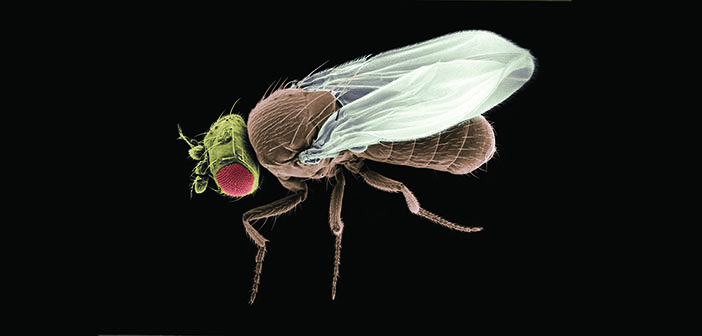Major NSF grant aims to help researchers at Brown better understand—and potentially improve—the aging process.
Little is known about how or why females and males of different animal species age, or why one sex outlives the other. A group of scientists from across the country, armed with a five-year, $12.5 million NSF grant, is poised to figure it out.
Researchers from various fields—including three from Brown—will work together to determine how multiple biological processes contribute to differences in aging between the sexes and uncover their evolutionary history.
Erica Larschan, PhD, a co-principal investigator on the grant and an associate professor of molecular biology, cell biology, and biochemistry, says she and her Brown colleagues will focus on gene regulation.
“Obviously, sex chromosomes are different between males and females, but are sex chromosomes really driving these differences in lifespan and healthspan?” Larschan says. “We’re also looking at metabolism and DNA damage: how do all these things work together?”
Larschan’s lab works with fruit flies. Even though they live only around 40 days, she says they are good models for this research because not only do male and female fruit flies age differently but they also have X and Y sex chromosomes, like humans. Her colleague Ashley Webb, PhD, the Richard and Edna Salomon Assistant Professor of Molecular Biology, Cell Biology, and Biochemistry, studies mice; other investigators on the grant have expertise in turtles, lizards, and fish, among other animals.
“The idea is to look at commonalities across these species in terms of how males and females age differently,” Larschan says. “They all have differences between males and females in lifespan, and we’re interested to see what actually drives those differences.”
Understanding aging differences in other species can potentially impact how humans approach aging and care, says Nicole Riddle, PhD, an associate professor of biology at the University of Alabama at Birmingham and the grant’s principal investigator.
“There are so many implications that aging has, and for us to have an opportunity to investigate how we could manipulate aging—be that through lifestyle changes or even medications—we could be primed to unlock the most robust understanding of aging we’ve yet known,” Riddle says.
While Larschan brings to the study her expertise in gene regulation processes on fruit fly X chromosomes, Webb uses mice to understand the molecular mechanisms of stem cell aging in mammals.
Rounding out Brown’s research team is Assistant Professor of Computer Science Ritambhara Singh, PhD, who uses artificial intelligence to develop machine learning models that will predict what is driving the differences between males and females, Larschan says. Including scientists with expertise outside of biology, she adds, is a critical feature of the grant.
“The NSF wants to bring people together from different fields because for a long time, people were siloed,” Larschan says. “They figured out … that you’re not really making a ton of progress if you’re staying in your silo and taking those incremental steps.”




